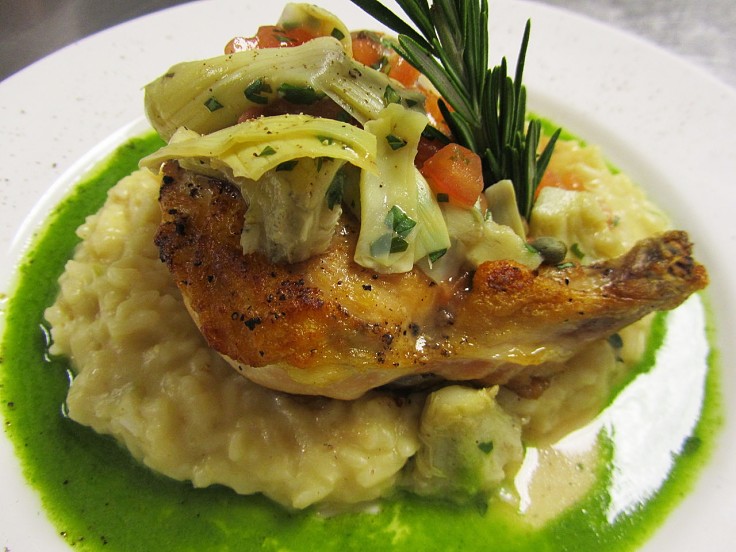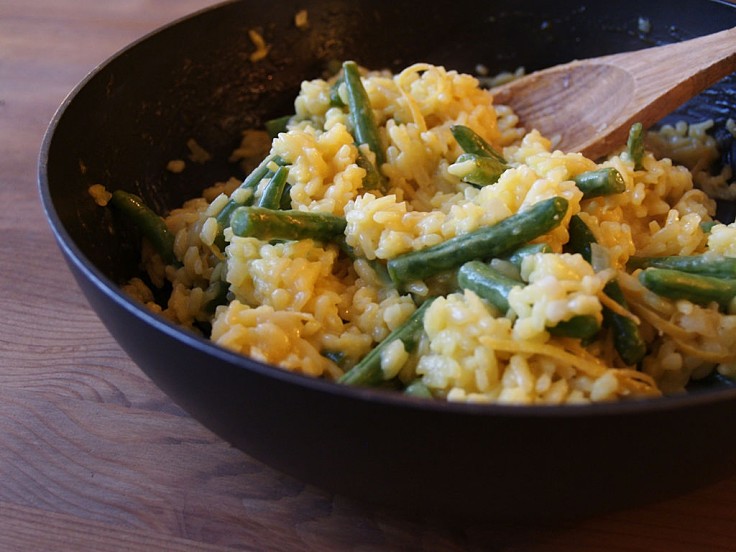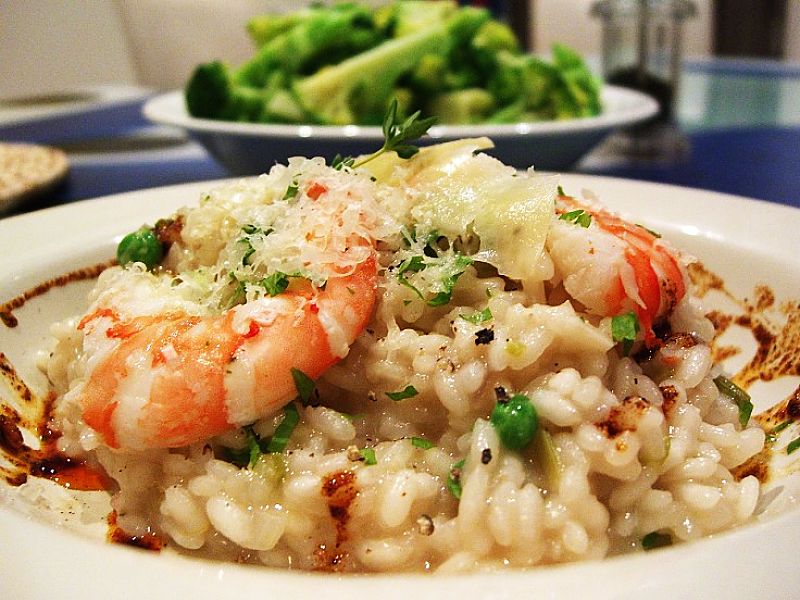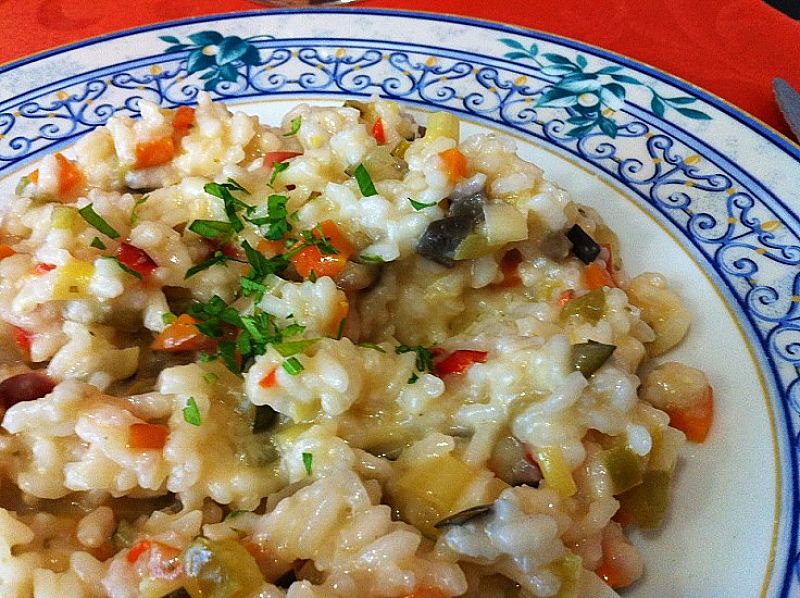Best Easy to Prepare Risotto Recipes and Essential Tips
Risotto is a classic Italian rice dish made from starchy and short-grained varieties of rice such as arborio (traditional) or carnaroli (for a lighter style). It's prepared using what is called the risotto method, that basically means stirring small amounts of simmering stock (like chicken stock) into rice in a heavy pot a little at a time, and the stock and flavour is absorbed into the rice.
While it cooks, the rice gives up some of its starch, giving the risotto a creamy, rich consistency. It is all assembled into a single pot. It sounds so easy and simple, but it is so easy to fail miserably and get it awfully wrong. The rice is always boiling over or boiling dry when being cooked and burning. Often a risotto can end up as a pan of crunchy rice, a soggy glutinous mess or the base of the pot gets burnt ruining all your efforts.
Risotto is easy to make once you learn a few tricks. In this article I explain the secrets to a simple and easy risotto, that you can get right every time.
Cooking Perfect Risotto - Every Time!
At the Start - Use the Correct Rice - Arborio, Vialone Nano or Carnaroli
The traditional rice is arborio but it tends to make a heavier style which has gone out of fashion. The modern lighter style is made with the delicate carnaroli rice. Like pasta, risotto is only cooked until it is al dente, which means slightly firm to the bite. Every cup of uncooked, dry rice will require about 4 cups of hot chicken or other stock for arborio rice, a little less for the other varieties. The exact amount varies each time you make risotto. Keep the stock hot and simmering in a small separate pot until you are ready to add it to the risotto. You'll also need a small ladle for adding the hot stock and a wooden spoon for stirring (the traditional one has a hole in the middle).
Basic Ingredients
1 brown onion finely chopped
2 garlic cloves, crushed
400g rice (carnaroli),
glass of white or red wine (warmed)
2.5 litres of chicken stock kept simmering in a pot
Prawns, chicken, asparagus, peas and other items you want to add to the risotto
75g of cold butter and 100g of grated Parmesan.
Step 1: Soffritto
Fry the onions and garlic in light vegetable oil using high to medium heat. You an use butter or olive oil but these oils impart a heavier taste. You can also fry the other 'hard' ingredients at this time such as asparagus, meat, prawns and hard mushrooms. Keep them warm to be added to the risotto later. Don't brown the onions.
One trick is fry the onions in a separate pan from the pot in which you toast the rice (next stage). This avoids overcooking the onions or burning the garlic. Mushrooms and other 'soft' ingredients can be lightly sauteed ready to be added to the risotto after the rice is cooked.
Step 2: Tostatura
In the pot you are going to use to prepare the risotto, add a tablespoon of oil, heat and then add the rice stirring thoroughly so that each grain gets warmed up and gets an even coating of oil. This toasting only takes three or five minutes. The grains should be come translucent but not get browned.
Next, stir in a glass of red or dry white wine that you have previously heated. The rice should sizzle as it hits the pan. If the wine is cold you will ruin the rice as it will start to flake on the outside and stay hard and crunchy in the middle. Stir till the wine evaporates entirely before proceeding to the next step.
Step 3: Adding the Stock
The stock used should be full of flavor and of high quality to impart a wonderful flavor to the rice. It should be kept simmering gently in a separate pan. Your pot containing the rice should be at a constant, moderate temperature throughout as the stock is added. The stock should added slowly, one ladle at the time, and more added when the last liquid added before has almost been completely absorbed by the rice. It is important that you decrease the size of increments as you go. If your recipe has 2 cups of stock, add about 1/2cup for the first addition,1/4 cup for the second addition, and so on. This is required because the exact quantity of stock for a perfect risotto is very hard to estimate (and will vary each time) and you want to be able to stop before you add too much liquid and ruin it. At the start, you are cooking the rice. Later, you are attempting to arrive at a sauce that has the perfectly-texture. Too much liquid will result in overcooked, mushy rice. Too little and the rice will be uncooked.
Start tasting the rice after 10-15 minutes, depending on the size of your recipe, before you've added all the liquid. At this stage the risotto should be two-thirds done with the rice almost at the al dente stage, but without much sauce as yet.
During the nest stage of adding stock to the pot, you are aiming to develop a sauce with a nice, creamy consistency. Add more stock a little at a time until the rice is just cooked to the al dente stage, and the sauce is just slightly more fluid than you want at the finish. A good suggestion for testing for the right consistency is to dip the spoon or spatula with the sauce so that the back is covered, and then run a finger down the back of the spoon or spatula. The sauce should not flow back quickly to fill your finger mark (too thin) but should just drop back into the groove slightly. Once you are sure that your rice is just cooked and the sauce is right, remove the pot from the heat.
Step 4: Add food Items to the Risotto
At this stage you can add the onions and hard ingredients that have been sauteed previously such as asparagus, meat, fish and prawns. You can also add the soft ingredients such as peas, fresh mushrooms, herbs and other items to add flavor to your risotto!
Step 5: Resting
Let the risotto sit for just a few minutes, so that the sauce will set up to the proper degree and the flavors will have a chance to meld, without stirring. This lets the temperature drop and prepares the risotto for the last and probably the most important step of them all for a perfect risotto.
Step 6: Mantecatura
Manteca is Spanish for butter. During this final stage, you will begin to emulsify the rice and create the creamy consistence that is a wonderful feature of a great risotto. Using a wooden spoon stir vigorously and beat in the very cold butter cubes and grated cheese (mostly its Parmesan). Beat till your arms ache and you get the right texture. The Risotto should be beaten so that it has a creamy texture and come to the table with a texture that is described as flowing onto the plate like a wave or "all onda" . If it is loose and soggy, you've added too much liquid. If it is a hard lump, you've added too little liquid or you have overcooked it. Don't add cream before you serve it, as this will ruin the taste.
Easy, Simple Recipe for Perfect Risotto
- 50 g (2 oz) Parmesan or Grana Padano (a vegetarian option) cheese, grated
- 50 g (2 oz) unsalted butter, diced
- 200 g carnaroli rice
- 1.25 litres (quarts) good quality stock - chicken or vegetable
- 25 g (1 oz) butter or 1 tablespoon vegetable oil
- Half an onion, finely chopped
Bring the stock to the boil and set aside. In a small heavy frying pan, melt the butter (or use the vegetable oil), add the onion and soften. Add the carnaroli rice and increase the heat. Stir the mixture to start to cook the rice and coat every grain, evenly with butter or oil.
Next, pour in a small glass of white wine, and keep stirring until most of the wine has evaporated. Begin to add the stock, a ladle at a time. With each addition of the stock, stir until it has nearly all been absorbed by the rice. But don't overdo it. The rice should be sloppy, not dry. Add another ladle of stock and repeat the mixing.
Add any extra ingredients you want through this cooking process, allowing enough time for the items to cook. Chopped asparagus and beans generally take about 10 minutes. Cooked chicken or prawns only need to be warmed, and so they can be added later.
When the rice begins to soften (after about 10-15 minutes, but always check), add the stock in smaller amounts, and keep checking until the rice is cooked just to your liking (don't overcook it or it will go mushy). Then add diced butter and grated cheese, and stir vigorously until the risotto is rich and creamy. Adjust the seasoning with salt and fresh pepper, then serve immediately topped with sprinkles of Parmesan cheese and fresh herbs such as basil or coriander.



